





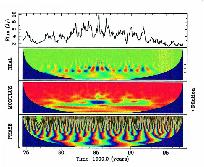 In
Extraordinary Activity in the BL Lacertae Object OJ 287
we use a continuous wavelet transform to analyze more than two decades
of data for the BL Lac object OJ 287 acquired as part of the University
of Michigan Radio Astronomy Observatory (UMRAO) variability program. We
find clear evidence for a persistent modulation of the total flux and
polarization with period ~1.66 yr and for another signal that dominates
activity in the 1980s with period ~1.12 yr. The relationship between these
two variations can be understood in terms of a "shock-in-jet" model, in which
the longer timescale periodicity is associated with an otherwise quiescent
jet and the shorter timescale activity is associated with the passage of
a shock. The different periodicities of these two components may reflect
different internal conditions of the two flow domains leading to different
wave speeds or different contractions of a single underlying periodicity
due to the different Doppler factors of the two flow components. We suggest
that the modulation arises from a wave driven by some asymmetric disturbance
close to the central engine. The periodic behavior in polarization exhibits
excursions in U that correspond to a direction ~45 deg from the VLBI
jet axis. This behavior is not explained by the random walk in the Q-U
plane that is expected from models in which a pattern of randomly aligned
magnetic field elements propagate across the visible portion of the flow
and suggests a small amplitude, cyclic variation in the flow direction in
that part of the flow that dominates centimeter wavelength emission.
In
Extraordinary Activity in the BL Lacertae Object OJ 287
we use a continuous wavelet transform to analyze more than two decades
of data for the BL Lac object OJ 287 acquired as part of the University
of Michigan Radio Astronomy Observatory (UMRAO) variability program. We
find clear evidence for a persistent modulation of the total flux and
polarization with period ~1.66 yr and for another signal that dominates
activity in the 1980s with period ~1.12 yr. The relationship between these
two variations can be understood in terms of a "shock-in-jet" model, in which
the longer timescale periodicity is associated with an otherwise quiescent
jet and the shorter timescale activity is associated with the passage of
a shock. The different periodicities of these two components may reflect
different internal conditions of the two flow domains leading to different
wave speeds or different contractions of a single underlying periodicity
due to the different Doppler factors of the two flow components. We suggest
that the modulation arises from a wave driven by some asymmetric disturbance
close to the central engine. The periodic behavior in polarization exhibits
excursions in U that correspond to a direction ~45 deg from the VLBI
jet axis. This behavior is not explained by the random walk in the Q-U
plane that is expected from models in which a pattern of randomly aligned
magnetic field elements propagate across the visible portion of the flow
and suggests a small amplitude, cyclic variation in the flow direction in
that part of the flow that dominates centimeter wavelength emission.
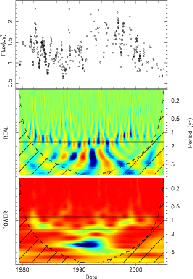 Participants:
Participants:
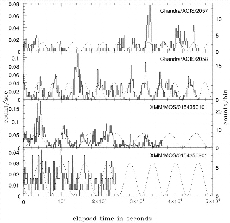 Participants:
Participants:
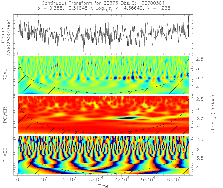 Participants:
Participants:
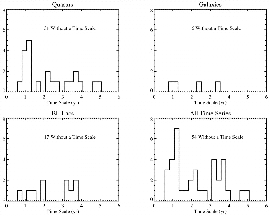 Participants:
Participants:
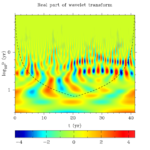 Participants:
Participants:
| See Wiki Wavelets for a good introduction and lots of links. | For the application of spectral techniques, rather than wavelets, see: Spectral Methods |